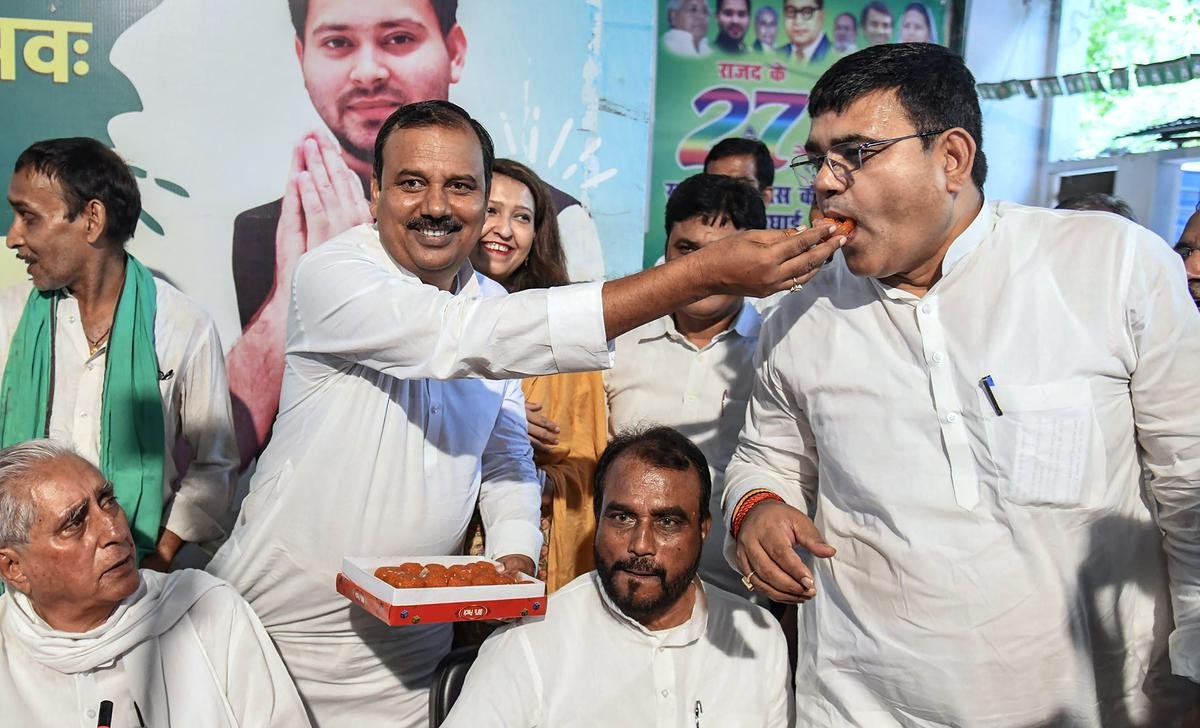In a significant development ahead of the 2024 Lok Sabha election, the Bihar government on Monday released the results of the much-awaited caste-based survey, which had triggered controversy. The survey report revealed that 63 per cent of Other Backward Castes (OBCs) constituted the state’s total population of 13 crore.
The caste-based survey, also known as the Bihar Jaati Adharit Ganana, was initiated by the Nitish Kumar-led government in January this year.
-
The detailed breakdown revealed that the backward class constituted 27 per cent of the population, while the extremely backward class make up 36 per cent. Scheduled Castes (SCs) accounted for slightly more than 19 per cent and Scheduled Tribes (STs) 1.68 per cent. The general category formed 15.52 per cent of Bihar’s population.
-
Yadavs — the community which Deputy Chief Minister Tejashwi Yadav belongs to — is the largest sub-group and formed 14 per cent of the state’s total population, followed by Brahmins 3.66 per cent, Musahars 3 per cent, Kurmis 2.87 per cent and Bhumihars 2.86 per cent.
-
The caste-based survey was initiated with the aim of uplifting backward communities and ensuring better implementation of welfare schemes. While the Nitish Kumar-led government maintained that the survey was crucial for social justice, it faced legal challenges and opposition from certain political parties.
-
The survey was met with opposition, with critics arguing that the Bihar government infringed upon constitutional jurisdiction by conducting the caste-based survey. They contended that only the central government had the authority to carry out comprehensive censuses.

Despite the legal hurdles, the Supreme Court refused to entertain pleas against the survey and the Patna High Court ruled that the exercise was valid and legal.
-
Significantly, the results of the caste-based survey in Bihar come months before the 2024 Lok Sabha polls will be held. The survey’s results could potentially reshape the political landscape in Bihar, a state dominated by political parties such as the Rashtriya Janata Dal (RJD), Janata Dal (United) (JDU) and the Bharatiya Janata Party (BJP). The votes of the OBCs are crucial for these parties in a state that sends 40 MPs to Parliament.
-
By providing a clearer picture of the state’s caste demographics, the survey could influence party strategies and policies, particularly those related to social justice and welfare.
-
There have been calls from the Opposition parties, including the Congress and Samajwadi Party (SP), for a nationwide caste census. The Opposition view it as a crucial tool to combat the ruling BJP, which opposes the practice.
-
Addressing a rally in poll-bound Chhattisgarh last month, Congress MP Rahul Gandhi had called for a caste census and said it was the “X-ray” of India. He asserted that such an exercise would ensure the “participation of OBCs, Dalits, tribals and women”.
“Caste census is India’s X-ray. It will reveal the population of each caste. Once the data will be made public, only then will all the communities be involved,” he said.
Rahul Gandhi accused the BJP-led central government of being scared as it did not release data on a caste census conducted by the Congress when it was in power.
-
In July, SP chief Akhilesh Yadav demanded a nationwide caste census to ensure that all communities get their due share in the development and mocked the BJP’s ‘sabka saath, sabka vikaas’ slogan.
“This inequality will end only if a caste census is carried out and people of all communities get their due respect and honour,” he said while addressing during the 74th birth anniversary of late veteran Kurmi leader Sonelal Patel.
-
The Bihar caste-based survey is the first such exercise since India became independent in 1947. The last such caste census was conducted way back in 1931, in the pre-Independence era. The first caste census was conducted by the British in 1881.
-
-

